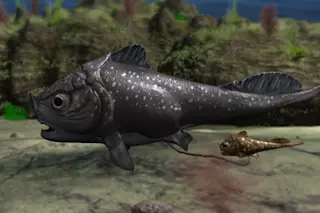I mean, really. No matter how you feel about the man, surely his mother is off-limits?
Translated from the Latin, the full name of this species comes out to be "Attenborough's mother fish." Where I come from, them's fightin' words.
But the name is quite accurate. Hot takes aside, the fossil of Materpiscis attenboroughi actually turns out to contain the oldest vertebrate pregnancy we've ever found. It sets in stone the ancient roots of live birth, and the "mother fish" appellation honors the species' status at the vanguard of viviparity.
The discovery, which came in 2005 in Australia's Gogo formation, pushed back the concept of live birth to about 380 million years ago — 200 million years older than what was assumed before, according to the BBC. And in a fish, no less.
That makes M. attenboroughi, named in a 2008 paper in Nature, similar to sharks today, at least ...














